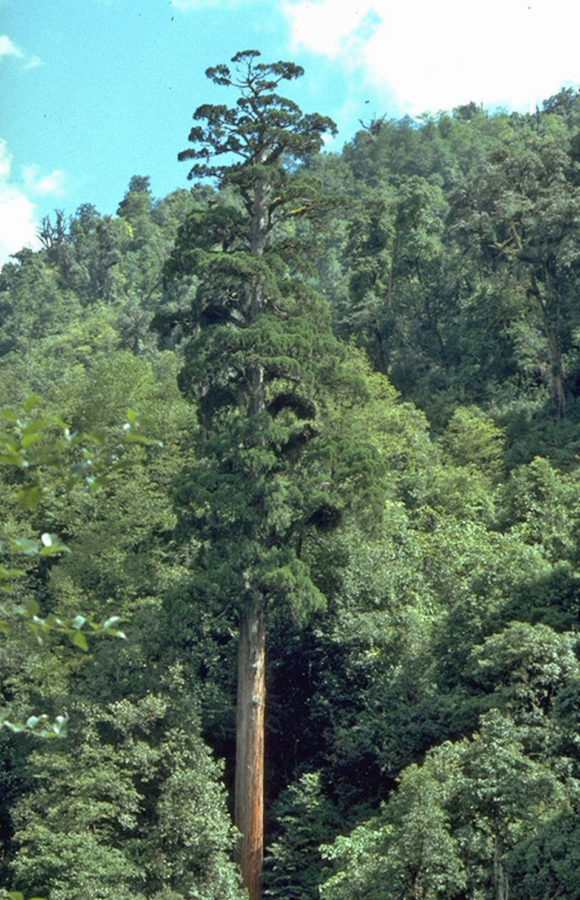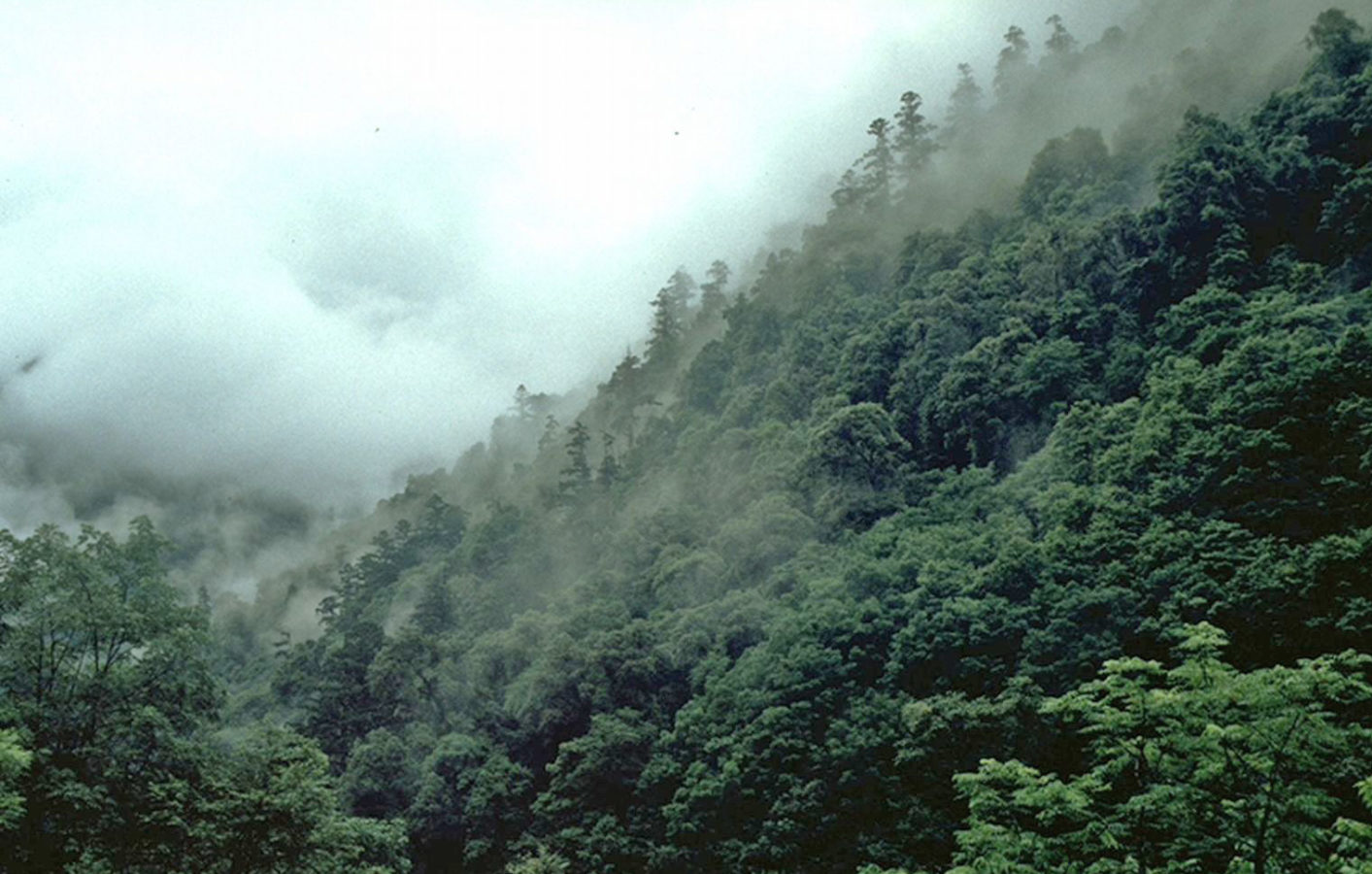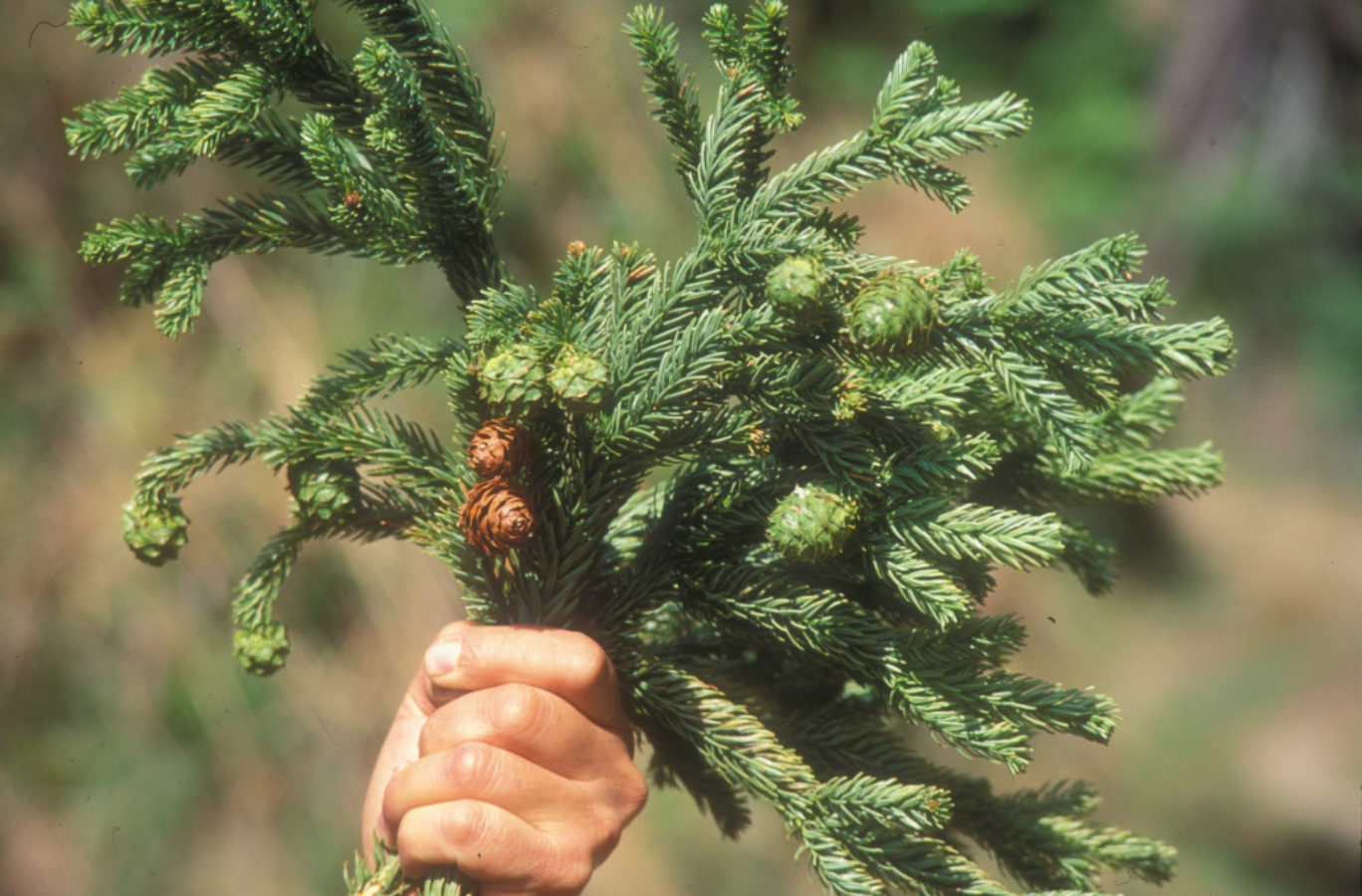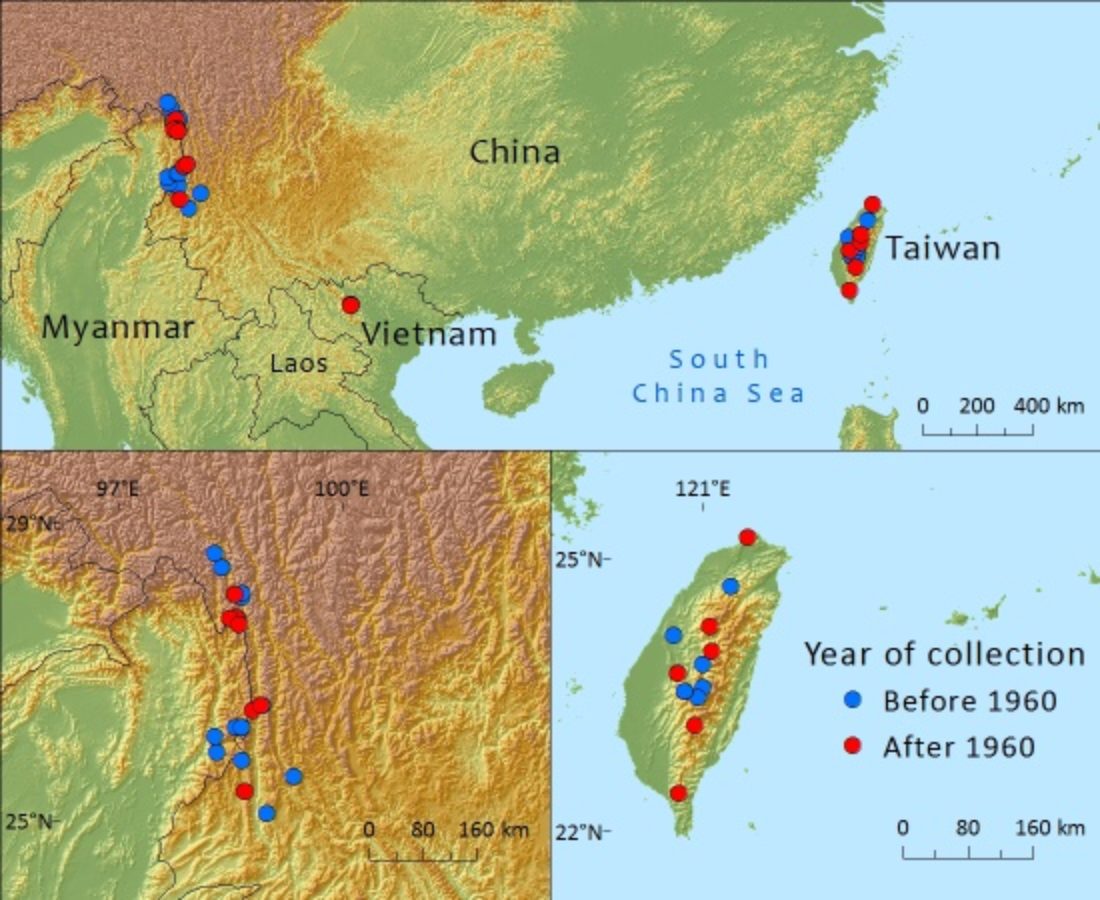Cupressaceae
Taiwania cryptomerioides
Taiwania has an unusual disjunct distribution with the main populations along the border between Yunnan and Myanmar (Gaoligong Mountains) and on Taiwan. There is also a small population in Việt Nam. Historical logging has reduced and fragmented the global population; forest conversion and fires threaten the Vietnamese locality.
Human Uses
Taiwania has a long history of exploitation for its durable, fragrant timber; one of its principal uses was for coffins. In Việt Nam it was locally used for house construction. Chemicals with insecticidal and medicinal properties have been extracted from the wood.
References and further reading
- Chou, Y.W., Thomas, P., Ge, X.J., Le Page, B. & Wang, C.W. (2011). Refugia and phylogeography of Taiwania in East Asia. Journal of Biogeography: 38:(10) 1365-2699.
- Farjon, A. & Thomas, P. (2007). Taiwania cryptomerioides - an overview biogeography and conservation. The International Symposium on Taiwania cryptomerioides, 8-10 December 2007, Nantou County, Taiwan. Taiwan: Experimental Forest, College of Bio-resources and Agriculture, National Taiwan University.: 9-17.
- Fu, L.K. & Jin, J.M. (1992). China Plant Red Data Book – Rare and Endangered Plants 1. Science Press, Beijing.
- Global Witness. (2005). A Choice for China Ending the destruction of Burma’s northern frontier forests. A Briefing Document by Global Witness. October 2005. Global Witness Ltd., London.
- Global Witness. (2009). A disharmonius trade: China and the continued destruction of Burma’s northern frontier forests. A Review by Global Witness: 2006-09. Global Witness Ltd., London.
- Hoang Van Lam & Yen Hoang Mai (2013). Hoang Lien- Van Ban Nature Reserve In: Sunderland, T.C.H., Sayer, J. & Hoang, M.H. (eds) Evidence based conservation: lessons from the Lower Mekong. Routledge, Oxon. pp 61-70.
- Hu, H.H. 1950. Taiwania, the monarch of Chinese conifers. Journal of New York Botanic Garden 51(603):63-67
- Kermode, C.W.D. 1939. A note on the occurence of Taiwania cryptomeriodes in Burma and its utilisation for coffin boards in China. Indian Forester 65:204-206.
- Kermode, C.W.D. 1945. 'Mine Eyes Unto the Hills'. Indian Forester 71(1):1-18
- Kingdon Ward, F. 1941. The Vernay-Cutting Expedition, November 1938 to April 1939: report on the vegetation and flora of the Hpimaw and Htawgaw Hills, Northern Burma. Brittonia 4(1):1-20
- Lu, S.Y. & Pan, F.J. (1996). Rare and Endangered Plants in Taiwan I. Council of Agriculture. Taipei
- Nguyen, T.H., Do, T.D. & Phan, K.L. (2002). The diversity of the flora of Vietnam 9. Taiwania Hayata and T. cryptomerioides Hayata (Taxodiaceae): new genus and species for the flora. (in Vietnamese with English summary). Journal of Genetics & Applications 1: 32-40.
- Nguyen, T.H., Phan, K.L., Nguyen, D.T.L.,Thomas, P.I., Farjon, A.,Averyanov, L. & Regalado Jr., J. (2004). Vietnam Conifers: Conservation Status Review 2004. Fauna & Flora International, Vietnam, Hanoi.
- Thomas, P. & Farjon, A. 2011. Taiwania cryptomerioides. In: IUCN 2012. IUCN Red List of Threatened Species. Version 2012.2. . Downloaded on 07 March 2013
- Wang, C.N. (2002). Extensions to the natural range of Taiwania cryptomerioides: largest known population discovered. Fitzroya 5: 5.
- He, L.Y., C.Q. Tang, Z.L. Wu, H.C. Wang, M. Ohsawa & K. Yan (2015). Forest structure and regeneration of the Tertiary relict Taiwania cryptomerioides in the Gaoligong Mountains, Yunnan, southwestern China. Phytocoenologia 45(1-2):135-156.







